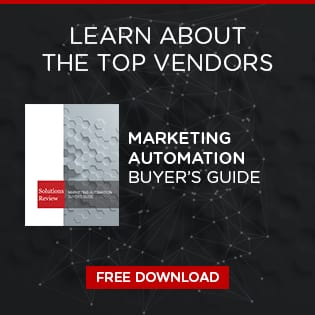AI and the Future of Intent Data: Unlocking Precision in B2B Marketing

Allie Kelly, CMO at Intentsify, explores AI, its role in intent data, and how it can unlock precision in B2B marketing. This article originally appeared in Insight Jam, an enterprise IT community that enables human conversation on AI.
 Artificial Intelligence (AI) has had a significant impact across various industries, reshaping strategies and transforming business models. B2B marketing is no exception. Traditionally, B2B marketers have leveraged intent data to identify prospective buyers and create campaigns targeting them. With AI transforming data analysis, uncovering precise patterns and higher-level buyer context, marketers can better leverage intent data to gain a deeper understanding of where buyers and buying groups are in the buying cycle, enabling scalable campaigns and more precise audience targeting.
Artificial Intelligence (AI) has had a significant impact across various industries, reshaping strategies and transforming business models. B2B marketing is no exception. Traditionally, B2B marketers have leveraged intent data to identify prospective buyers and create campaigns targeting them. With AI transforming data analysis, uncovering precise patterns and higher-level buyer context, marketers can better leverage intent data to gain a deeper understanding of where buyers and buying groups are in the buying cycle, enabling scalable campaigns and more precise audience targeting.
With the shift from individual buyers to buying groups and the constantly evolving landscape, AI-driven intent data is crucial for ensuring successful go-to-market (GTM) strategies.
The State of Intent Data in B2B Marketing
In the current environment, B2B marketing teams are struggling to maximize ROI on intent data. To effectively leverage intent data and maximize ROI, teams must understand how buyer signals are sourced, scored, and categorized before applying the data to their campaigns. Without this deeper understanding, it can be difficult to reach buyers at the right time and in the most effective way. With intent data being collected from a myriad of sources, these insights often lack transparency and can become siloed, diminishing the potential effectiveness when creating buyer models.
As the buying cycle becomes lengthier and more complex, understanding the when and why in buyer engagement is key. Recent Forrester data highlights that 81 percent of buyers have expressed dissatisfaction with the B2B buying process and their chosen providers, underscoring the need for more precise approaches to intent-driven data strategies. Simultaneously, research also shows that 75 percent of B2B buyers prefer a rep-free sales experience, highlighting the need to maximize value at every touchpoint in the buyer journey.
The Impact of AI on Intent Data on B2B Marketing
Traditional intent data tools rely on static data, such as website visits and form fills, but AI models enable the rapid processing of behavioral signals and context in real-time. By shifting from reactionary insights based on previous data to predictive analytics and recommendations, marketers can take advantage of benefits including:
AI Driven Data Analysis – Maximizing Data Value
AI can enable marketing teams to analyze large stores of intent data, cutting through the noise and providing critical insights and recommendations for marketing and sales teams, allowing for more strategic and targeted buyer engagement.
Target Buyer Groups – Solution-Level Intent Modeling
Rather than leveraging category modeling, AI-powered intent data solutions can utilize solution-level intent modeling to differentiate the weight of each captured behavior, providing deeper insights at the account, buying group, or persona level.
Quality Data – Understanding Customer Intent
In the past, marketing teams have relied on volume-based metrics like clicks to gauge buyer interest. AI-powered solutions can provide key context related to customer intent by recognizing behavioral patterns and providing insights into the consumer’s stage in the buying journey and their level of interest.
How to Leverage AI-Driven Intent Data to Maximize ROI
As the B2B marketing space and the buyer journey continue to evolve, AI-powered intent data is emerging as a powerful tool for maximizing the effectiveness of GTM strategies and empowering marketing teams to engage buyers with precision. To maximize the ROI on AI-powered intent data, the marketing and sales teams must align by integrating insights into CRM tools.
However, before considering integration, here are four key elements marketers should consider when identifying the best vendor for their business:
Signal Fidelity Over Signal Volume
The era of vanity metrics is over. CMOs should demand intent data partners who can demonstrate why a signal matters, not just that it exists. Consider providers who offer granular transparency into signal weighting methodologies and can differentiate between passive content consumption and active problem-solving behavior. The question isn’t how many signals did we capture?—it’s how many signals actually predicted buying behavior? Insist on seeing decay curves, false positive rates, and retrospective conversion analysis.
Integration Architecture as a Competitive Moat
Intent data solutions should function as connective tissue across the entire revenue tech stack—not another data silo. CMOs should evaluate vendors on their ability to operationalize insights in real-time across CRM, MAP, advertising platforms, and sales enablement tools. The most sophisticated CMOs are building “intent orchestration layers” where AI-powered signals automatically trigger coordinated plays across channels. If a vendor can’t explain their API strategy and bi-directional data flows in the first meeting, keep looking.
Buying Group Intelligence, Not Just Account Scoring
Individual account scores are table stakes. The next frontier is understanding the composition, dynamics, and readiness of buying committees. CMOs should seek partners who can map relationship networks within target accounts, identify the emergence of new stakeholders, and detect shifts in buying group consensus. The winning vendors are those who can answer: Which three people need to align for this deal to progress, and what content will bridge their divergent priorities?
Adaptive Learning Systems Over Static Models
The most dangerous assumption is that buyer behavior remains constant. CMOs should prioritize intent data vendors who employ continuous model retraining based on actual conversion outcomes—not industry benchmarks. Partners should demonstrate how their AI adapts to each unique buyer journey, incorporate feedback loops from closed-loop revenue data, and evolve as market conditions shift. Ask the hard question: How does your model perform differently for us versus your other clients, and can you prove it?
Conclusion
As AI continues to evolve, its role in shaping the increasingly complex buyer journey has become more apparent. With traditional intent data becoming less effective, the future of B2B marketing success depends on a combination of human knowledge and AI-powered insights. This will enable marketers to make the most of their intent data through more informed decisions on GTM strategies and buyer engagement, giving them a competitive edge in the market.




















